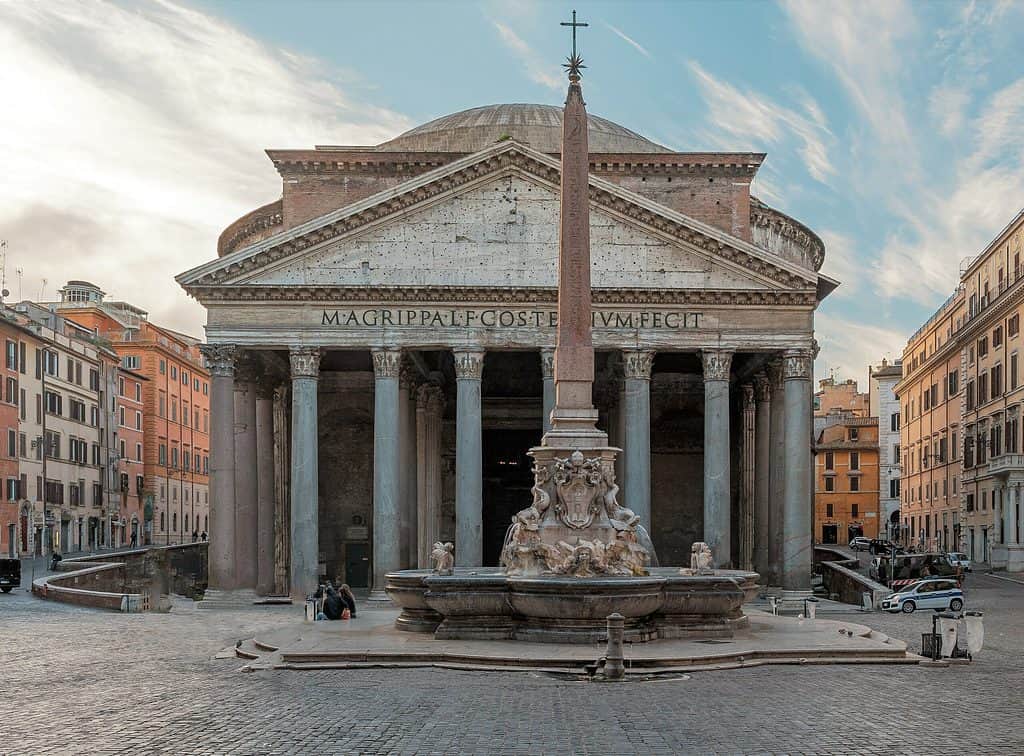With so much modern infrastructure crumbling after a few years or decades, it’s absolutely stunning that Roman concrete still lasts so well after some 2,000 years. Not only is it extremely durable, but it’s also durable in places where modern concrete doesn’t fare well (like in marine environments, for instance). Now, researchers have found one key element that made Roman concrete so durable: lime clasts.

The Romans were master builders. As they built one of the most powerful empires in human history, they also constructed things like aqueducts, temples, and roads, many of which are still largely intact after all this time. Researchers have long wondered what gave it its extreme strength, and recent studies have shed some light on the remarkable properties of this material. For instance, in 2021, a team led by MIT professor of civil and environmental engineering Admir Masic, found that thousands of years worth of chemical interaction between a particular type of volcanic ash and water have made the Roman concrete stronger, not weaker, over time. Now, to analyze Roman concrete in even more detail, Masic, along with former doctoral student Linda Seymour and four other researchers analyzed 2000-year-old concrete samples from an archaeological site close to Rome. They used advanced scanning technology like electron microscopy and X-ray diffraction to study the composition and structure of the concrete.
They managed to find yet another secret that empowers Roman concrete — one that was hiding in plain sight.
Ash and lime
Roman architects and historians described a key component of their concrete — a type of ash called “Pozzolana,” from the area of Pozzuoli near Naples. Pozzolana is a type of volcanic ash that reacts with calcium hydroxide in the presence of water at room temperature. The material also contains highly porous glass that works excellently as a binder.
The Romans loved their Pozzolana so much that they often shipped it across their vast empire when they had important construction projects. Another material that features prominently is lime. Lime is a far more common material than Pozzolana and was given less attention, although studies found that it actually helps concrete grow stronger in time, particularly in the presence of seawater.
Researchers have known for a long time that Roman concrete often includes clasts — millimeter-sized chunks of lime, but paid them little attention. In fact, lime clasts were often regarded as an imperfection — proof of shoddy material or lack of careful preparation of the concrete material.
But the new study suggests the lime clasts are way more important than previously thought.
“The idea that the presence of these lime clasts was simply attributed to low quality control always bothered me,” says Masic for MIT. “If the Romans put so much effort into making an outstanding construction material, following all of the detailed recipes that had been optimized over the course of many centuries, why would they put so little effort into ensuring the production of a well-mixed final product? There has to be more to this story.”

They found that contrary to previous belief, when lime was incorporated into Roman concrete, it wasn’t first combined with water — it was added in a process called “hot mixing”, at high temperatures. At these high temperatures, the lime clasts develop a characteristically brittle nanoparticulate architecture that can act as a calcium source that “heals” the concrete whenever it becomes damaged, as was also found in previous research that found “healed” cracks in Roman concrete.
“The recent discovery of calcite-filled cracks in Roman concrete suggested a potential long-term healing process that requires a calcium-rich source. Considering the ubiquity of relict lime clasts in Roman concrete and their high surface area due to their particulate microstructure, these inclusions might provide the requisite calcium reservoirs for these processes. Inspired by these observations, we set out to create a modern analog of this material and explore its properties,” the researchers write in the study.
The researchers caution that this doesn’t mean we’ve uncovered the ultimate and final secret of Roman concrete. The Romans used several variations to build their concrete, and as previous research has shown, there are likely several different secret ingredients working together to give the material its unique properties.
But the findings are exciting nonetheless. Not only do they shed new light on an ancient mystery, but they could help us make better, long-lasting, and self-healing concrete now — including in 3D printing, which has recently been picking up steam as a method to construct houses and other structures. The method could also help produce more resilient varieties of concrete for offshore and coastal environments.
In addition to conducting more studies on Roman concrete, the researchers are now looking at ways to include this type of lime clast into modern concrete and commercialize the product.
The study was published in the journal Science Advances.






